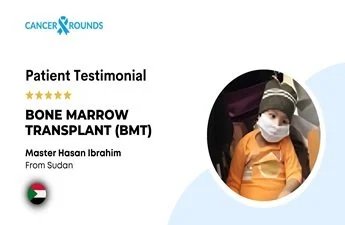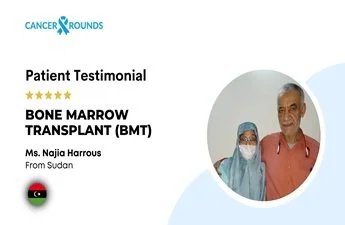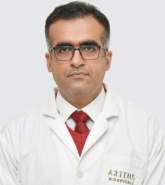Acute Myeloid Leukemia Treatment (AML)
What is Acute Myeloid Leukemia?
Acute Myeloid Leukemia (AML) is not a single disease as it affects blood and bone marrow. Acute myeloid leukemia is aggressive cancer in which cells overgrow. It is a complex condition that requires quick treatment after diagnosis. AML generally develops in a week and gets hazardous over time. Leukemia’s is produced in myeloid inside the bone marrow, which is red blood cells, platelets and all RBCs except lymphocytes. Acute Myeloid Leukemia Treatment is essential in the early stage to give extended life to the patient.
AML is a result of the uncontrolled production of immature RBCs called a leukemic blast. These cells pack the bone marrow and stop the production of healthy blood cells. It is also leaked in the central bloodstream which is circulated to the other parts of the body.
Due to their immaturity, they are unable to fight with infection and unable to perform correctly.
Symptoms of Acute Myeloid Leukemia (AML)
Common signs and symptoms in the early stage of acute myeloid leukemia may include flu or other common infectious diseases. Acute Myeloid Leukemia Treatment is not given in the earlier stage; it may become severe as bleeding from the different parts of the body.
Signs and symptoms may vary as per the type of blood cell and bone marrow affected.
- Acute myeloid leukemia symptoms like infections and fever due to a lack of white blood cells in our body as they protect our bodies from external germs and bacteria. The reason behind these Acute Myeloid Leukemia Treatment is a reduction in the number of healthy white blood cells in the body, which works as the defense against foreign germs and infections. As a result, patients with Acute Myeloid Leukemia Symptoms may have become susceptible to infections and fevers.
- Bleeding and bruising on the skin– Platelets are tiny blood cells that control bleeding. Patients having low platelet levels in the bloodstream can lead to easy bleeding or bruising. Some other blood defects like slow healing of cuts and wounds, prolonged bleeding either in case of minor cuts and unexplained bruises.
- Anemia, due to less blood compounds-Red blood cells, transports oxygen to the entire body. The low level of healthy blood components caused by AML, which results in excess tiredness and weakness, difficulty in breathing. These Acute Myeloid Leukemia Symptoms can be effectively eliminated with effective and on-time Acute Myeloid Leukemia Treatment.
- Other Acute Myeloid Leukemia Symptoms like Bone and joints pain- The increase in acute myeloid leukemia cells can cause pain in bones, joints or both, swollen lymph nodes, swollen and bleeding gums, chest pain and abdominal awkwardness due to a swollen spleen or liver in your stomach.
Acute Myeloid Leukemia Treatment
Treatment Options for Acute Myleoid Leukemia (AML)
In the initial stage of Acute Myeloid Leukemia Treatment are aims to kill the leukemia cells in your bloodstream and bone marrow. In the first phase, focus on killing the remaining leukemia cells. The clinician will decide further treatment according to the diagnosis result and the stage of the disease. These four methods are used in Acute Myeloid Leukemia Treatment-
Chemotherapy– A high dose of chemo is introduced to kill the tumor cell in your bone marrow and bloodstream. In most cases, a combination of drugs is given to the patient in the guidance of the doctor at the nursing center. The whole Acute Myeloid Leukemia Treatment process is done in a controlled environment in the monitoring of the doctor.
- Chemotherapy is started with the injection of the drug into the body by mouth or vein or muscle when the drug enters into the bloodstream and heading towards the tumor cell.
- More than one chemotherapy is given in the case of the brain or spinal cord tumor to stop its further movement.
Radiation cancer therapy– In radiation Acute Myeloid Leukemia Treatment process high- frequency x-rays are used to destroy the tumor cell or stop its division.Two types of radiation therapies are used in radiation Acute Myeloid Leukemia Treatment.
- The radiation is applied from outside the body in case of external radiation therapy. External therapy is used majorly in adult leukemia.
- Internal radiation uses a radioactive element through a catheter on the exact site of the tumor. Radiation therapy relies on the location of cancer and the number of leukemia cells.
Stem cell transplant in the combination of chemotherapy– Acute myeloid leukemia treatment is given to destroy tumor cells as some healthy cells are also eliminated due to high doses. Stem cell treatment is given to replace the infected cell with new blood-forming cells. The immature stem cells are retrieved from the patient’s body or donor body and induced in the patient after chemotherapy.
- In the case of donor stem cell therapy, the stored stem cells are thawed and injected into the patient’s body through an infusion. These infused immature stem cells are started making new blood components in the body after one week of induction.
Some other anticancer drugs are also used to stop the highly dividing leukemia cells a Acute Myeloid Leukemia Treatment.
Doctors For Acute Myeloid Leukaemia
Need More Recommendations ?
Acute Myeloid Leukemia Treatment Success Rate
Success Rate for AML Treatment
After getting Acute Myeloid Leukemia Treatment, the affected blood has been repaired or replaced by various methods. The chances of survival depend on numerous factors like the patient’s age, body’s response, and pre-medical history.
Leukemia is either acute, where most of the blood components are severely affected and lost the ability to produce a standard or chronic condition where few blood cells are not working correctly or reduced the rate of degeneration.
- The overall survival rate in 5 years of leukemia is about 60 to 62 percent. As most of the patient’s age is around 66 years or not less than 55 years.
- The survival rate is higher in younger people as under 20 aged people survival rate is more than 97%.
- More than 96 percent of survival recorded in 20-35 years older adults.
- The success rate is around 94 percent in 36-50 years age people.
- 51 to 75 years old aged people survival rate is about more than 76 percent
- People aged between 76- 84 survival rate is less than 70 percent
- More than 84 years aged people have only 21 percent survival rate
Cost Estimates for AML Treatment in India
The cost of Acute Myeloid Leukemia (AML) treatment in India varies depending on the hospital, treatment stage, and whether advanced procedures like bone marrow transplant are required. On average, chemotherapy-based treatment cost of Acute Myeloid Leukemia (AML) starts from around ₹3,00,000–4,00,000 (USD 4,800) and can go up to ₹15,00,000–20,00,000 (USD 20,000–25,000) for a full treatment course including induction and consolidation therapy. If advanced targeted drugs or prolonged hospital stays are needed, costs may rise further, sometimes reaching ₹30,00,000 (USD 35,000–40,000). Diagnostics such as bone marrow biopsy and genetic testing usually cost between ₹50,000–1,00,000, while chemotherapy cycles range from ₹1,50,000–5,00,000. Targeted therapies, such as FLT3 or IDH inhibitors, add another ₹2,00,000–10,00,000 depending on the duration. For patients needing a bone marrow transplant (BMT), the expenses are higher: an autologous transplant typically costs ₹10,00,000–15,00,000, while an allogeneic transplant may range from ₹15,00,000–30,00,000. Treatment in metro cities like Delhi, Mumbai, and Bangalore often costs more compared to tier-2 cities, though public hospitals and private hospitals such. Overall, India remains significantly more affordable than Western countries, with costs being 70–90% lower, while still offering access to advanced therapies and specialized leukemia care.
Role of Cancer Rounds in the AML Treatment Journey
Early Guidance and Expert Consultation
- Cancer Rounds connects patients with top hematologists and oncologists in India and abroad who specialize in AML.
- Provides second opinions on diagnosis, helping patients confirm bone marrow biopsy results, genetic markers, and staging.
- Guides families in understanding complex treatment protocols like induction therapy, consolidation therapy, and bone marrow transplant.
Personalized Treatment Planning
- Matches patients with the best-suited hospitals and doctors based on their medical condition, budget, and geographical preference.
- Provides insights into newer targeted therapies (FLT3 inhibitors, IDH inhibitors, immunotherapy) and clinical trials if available.
- Ensures transparent discussion of treatment costs in India vs. abroad, helping in budget optimization.
Hospital & Doctor Coordination
- Cancer Rounds arranges priority appointments with oncologists.
- Facilitates smooth hospital admission for chemotherapy sessions or transplant procedures.
- Coordinates with hematology departments for urgent interventions like leukapheresis or infection management.
Bone Marrow Transplant (BMT) Support
- Helps in donor search and matching (siblings, unrelated donors, or registries).
- Connects with leading BMT centers in India like Medanta, Apollo, Fortis, Artemis, etc.
- Provides detailed information on costs, success rates, and recovery protocols for allogeneic and autologous transplants.
International Patient Assistance
- Visa, travel, and accommodation support for patients from Africa, Middle East, Fiji, Vanuatu, etc.
- Language interpreters for better communication with doctors.
- Post-treatment teleconsultations to continue care from home country.
Cost Transparency & Financing Options
- Shares a clear cost breakdown of AML treatment in India, including chemotherapy cycles, supportive care, and transplant expenses.
- Ensures no hidden charges and continuous budget monitoring throughout treatment.
You May Be Also Interested In
All Treatment Pages
Related Patient Stories

Our son had relapsed leukemia. Thanks to Cancer Rounds & Fortis, he got the right treatment and a second chance at life. Forever thankful.

India gave me hope and healing. With Cancer Rounds by my side, I overcame CLL through a bone marrow transplant. Forever grateful for this journey.
Our Impact
CancerRounds is making quality cancer care accessible to more people every day.




Why Choose India for Cancer Treatment?

World-Class Care
Skilled oncologists provide top-tier medical services

Affordable Treatment
Costs are significantly lower than in Western countries.

Comprehensive Packages
Hospitals offer all-inclusive plans covering surgery, stay, and aftercare.

Easy Accessibility
Well-connected airports and international flight routes.

Proven Success
High patient satisfaction and positive treatment outcomes
Thank You!
Your form has been submitted successfully.








